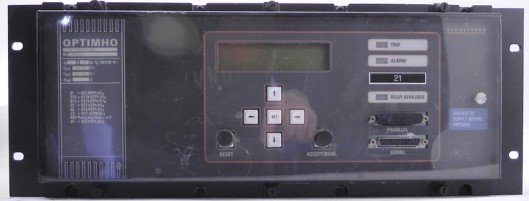
Static Relays in Power Networks
Static relays are an integral part of electrical power networks, providing reliable protection against faults and abnormalities. These relays rely on electronic circuits and solid-state components for their operation, as opposed to traditional electromagnetic relays that utilize moving mechanical parts. By using solid-state technology, static relays offer numerous advantages in terms of accuracy, reliability, and speed of operation.
Types of Static Relays
There are several types of static relays that are commonly used in transmission and distribution systems. These include:
Solid-state overcurrent relays: These relays monitor the current flowing through a circuit and provide protection against overcurrent conditions. They can be programmed with specific current levels and time delays to respond to different fault conditions.
Differential relays: These relays compare the currents entering and leaving a specific portion of the power system to detect internal faults. They are commonly used to protect transformers, generators, and motors.
Distance relays: These relays measure the impedance of a transmission line and provide protection based on the distance to the fault. They are widely used in high-voltage transmission lines to isolate faulted sections and minimize downtime.
Directional relays: These relays ensure that faults are detected only when they occur in a specific direction. They rely on measuring both current and voltage phasor angles to determine the fault location.
Advantages of Static Relays
Static relays offer several advantages over their electromagnetic counterparts:
- Higher accuracy and sensitivity: Static relays can measure voltage and current with high precision, enabling rapid detection and isolation of faults, minimizing the impact on the power system.
- Faster response times: The absence of mechanical parts allows for quicker signal processing, resulting in faster fault clearance and improved system stability.
- Increased reliability: Without moving parts, static relays eliminate wear and tear, reducing maintenance needs and improving overall system availability.
- Adaptability: Static relays can be easily programmed and reconfigured to suit different protection requirements, making them flexible and easier to integrate into existing power systems.
Practical Example
To better understand the application of static relay protection in a high-voltage transmission system, let’s look at a specific example. Suppose we are protecting a 220 kV transmission line with a static distance relay.
Relay Settings: The distance relay is set with three protection zones, each covering a specific percentage of the line length:
- Zone 1: 80% of the line length (instantaneous protection)
- Zone 2: 120% of the line length (delayed protection, covering adjacent sections)
- Zone 3: 200% of the line length (backup protection for remote faults)
Fault Scenario: A fault occurs at 70% of the line length.
- The distance relay will measure the impedance seen at the relay location.
- Since the fault is within Zone 1, the relay will operate instantly, isolating the faulted section of the transmission line and preventing further damage or disruption to the network.
This example illustrates how distance relays—whether static, numerical, or electromechanical ensure rapid, precise protection in high-voltage systems, maintaining system stability and reliability.
FAQ: Common Issues with Static Relays
How do static relays improve system reliability?
Static relays improve system reliability by eliminating mechanical parts, which are prone to wear and tear in traditional relays. This results in fewer maintenance requirements and a longer operational lifespan. Additionally, static relays offer higher precision in fault detection, allowing for quicker fault isolation and minimizing the risk of widespread outages.
Can static relays be easily integrated into existing systems?
Yes, static relays are highly adaptable and can be easily programmed to match existing system protection requirements. Their flexibility makes it easier to integrate them into legacy systems without requiring significant hardware modifications.
What types of faults can static relays detect?
Static relays can be configured to detect a wide range of fault types, including overcurrent, overvoltage, distance-based faults, and directional faults. Their high sensitivity makes them particularly effective at detecting subtle issues before they escalate into major system disruptions.